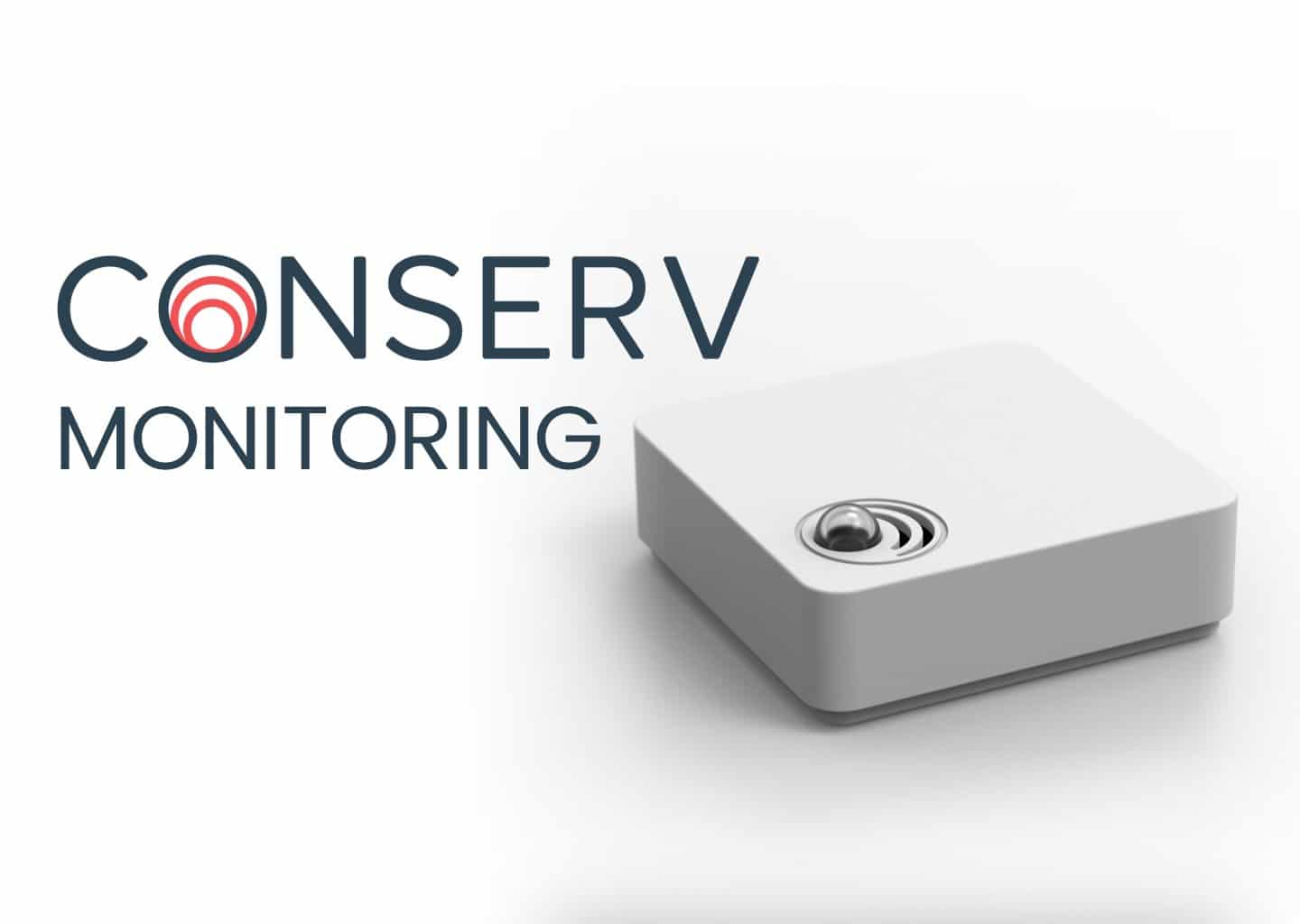We like to say that Conserv offers simple, wireless environmental monitoring for collections—in museums, archives, historical properties, private facilities, or anywhere else. Here’s a basic overview of what that means and how it works. (For technical details, check our Technical Specifications page)
Sensors designed for collections
Sensors are about the size of the palm of your hand. Their batteries should last three years or more (although the batteries will need replacement eventually, so remember that when you’re deciding where to put the sensors).
Indoor sensors measure temperature, relative humidity, movement, visible, infrared, and ultraviolet light levels. Conserv is also integrated with water leak sensors and outdoor sensors that measure temperature and relative humidity.
Real-time readings, no manual data collection
Every 10 minutes, a sensor sends its readings to a gateway. The gateway relays those messages to the internet, where they’re stored so you can access them on a computer, tablet, or smartphone. The gateway acts much like a Wi-Fi router, except that it doesn’t use Wi-Fi to connect with the sensors. (More on that in a moment.)
You’ll need one sensor for each space you want to monitor. We say “space” rather than “room” for a reason. If a room or storage area is particularly large or contains different microenvironments, it might require two or more sensors.
Indoor sensors should go somewhere stable and out of direct sunlight, with good airflow. Attach them to a wall or just set them on a shelf or cabinet. The gateway goes in a central location relative to the sensors, for best signal strength. It’s not much bigger than the sensors, so you can tuck it away anywhere that has internet access and an electrical outlet. It runs on standard 110-volt current, with four-hour battery backup in case of an outage.
Get started with us at Conserv
LoRaWAN beats WiFi and Bluetooth
Because the gateway connects to the sensors via something called LoRaWAN, you’ll need just one gateway, unless your building is huge or you operate multiple buildings (no matter how many sensors you have).
LoRaWAN stands for Long Range Wide Area Network. LoRaWAN consumes very little power but has much longer range than Wi-Fi. In open air, the signal can literally travel for miles. Even in a big building with lots of thick walls, your sensor network should have no problem transmitting to your gateway.
Check your environment from anywhere
You can use your computer or mobile device to check on the readings at any time, from anywhere that lets you connect to the internet. You can also set up the Conserv system to send alerts to people you designate when a reading exceeds a threshold limit that you select.
So the system is easy to set up, requires virtually no maintenance, quietly monitors your collection 24/7, lets you get real-time readings anytime, from anywhere, and will alert you through your mobile device if there’s a problem that might need immediate attention. See what we mean about simple?
You can get lots more details about how the system works on our Help Center page. Get a price quote or more information. We look forward to helping you keep your precious collection safe.
Take Our Survey, Connect with a Conservator
If you have any questions about environmental monitoring, integrated pest management, or just want to talk about preventative conservation, please reach out to us! Don’t forget to check out our blog or join our community of collections care professionals where you can discuss hot topics, connect with other conservators or even take a course to get familiar with the Conserv platform.




